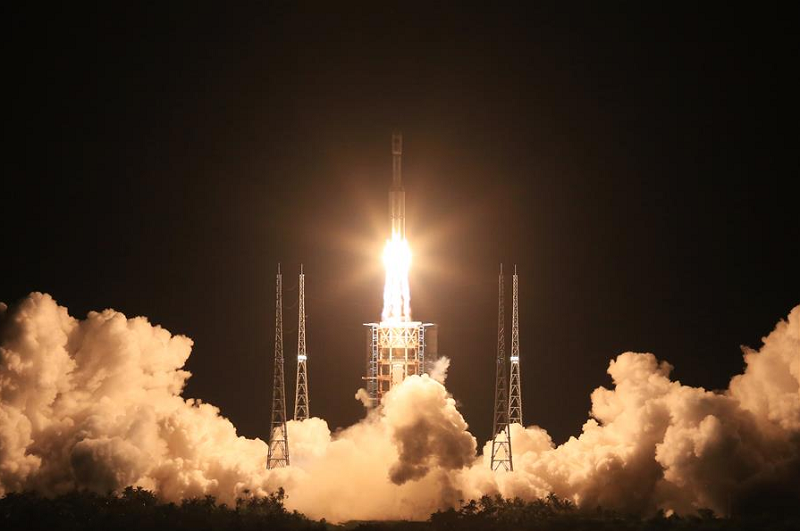
Image credit: Xinhua / Li Gang
China’s Long March 7 rocket took off on Monday, June 25 and broke up over the atmosphere on Wednesday, July 27, creating fiery fragments that were reported over the western United States.
The Long March 7 test flight is a prelude to China’s plans for a crewed space station known as Tiangong-3, which the China National Space Administration (CNSA) hopes to launch in the 2020s. This type of rocket, the most powerful ever launched by China according to spaceflightnow, will be used to launch supplies to the anticipated space station, as well as potentially being used to launch crew vehicles.
On its first mission, the rocket carried a prototype version of the potential crew capsule that will be used in the space station project, as well as two small satellites. The capsule was recovered from where it splashed down in an ocean landing and will be stored at the launch site. The part that trailed across the sky on Wednesday was the second stage, Harvard-Smithsonian Center for Astrophysics astrophysicist Jonathan McDowell told Spaceflightnow. Several amateur sky-watchers and the United States space traffic control monitored the descent.
At present, it appears that most of the debris burned up in the atmosphere, but it’s possible that larger pieces might have landed. Long March 7’s second stage was one of the larger pieces of debris to fall back to Earth, McDowell said: although its exact dimensions have been kept under wraps by the Chinese government, it is estimated to be about 36 feet long and 11 feet in diameter.
Long March 7 was the first vehicle to take off from Wenchang Satellite Launch Center, a relatively new launch complex placed closer to the equator to take advantage of Earth’s rotational speed.
Two more craft in the series, the larger Long March 5 and smaller Long March 6, will continue to be used to pave the way for the planned space station. Their kerosene and liquid oxygen fuel is said to be more environmentally friendly than the hydrazine and nitrogen tetroxide mix used by the previous Long March rockets that it is intended to replace. It was also the first Chinese carrier rocket that was designed using computer-aided technology. Other design considerations also make it more able to deal with conditions on Earth, as well as in space: the design was made waterproof so that it could launch in the rain.
Long March 7 has six 120-ton thrust engines and a full weight of 597 metric tons.
Currently, China’s uncrewed orbital science lab Tiangong-1 was on track to be de-orbited in 2013, but has been reported as experiencing telemetry issues that made it impossible for it to be controlled from Earth.
Filed Under: Aerospace + defense




